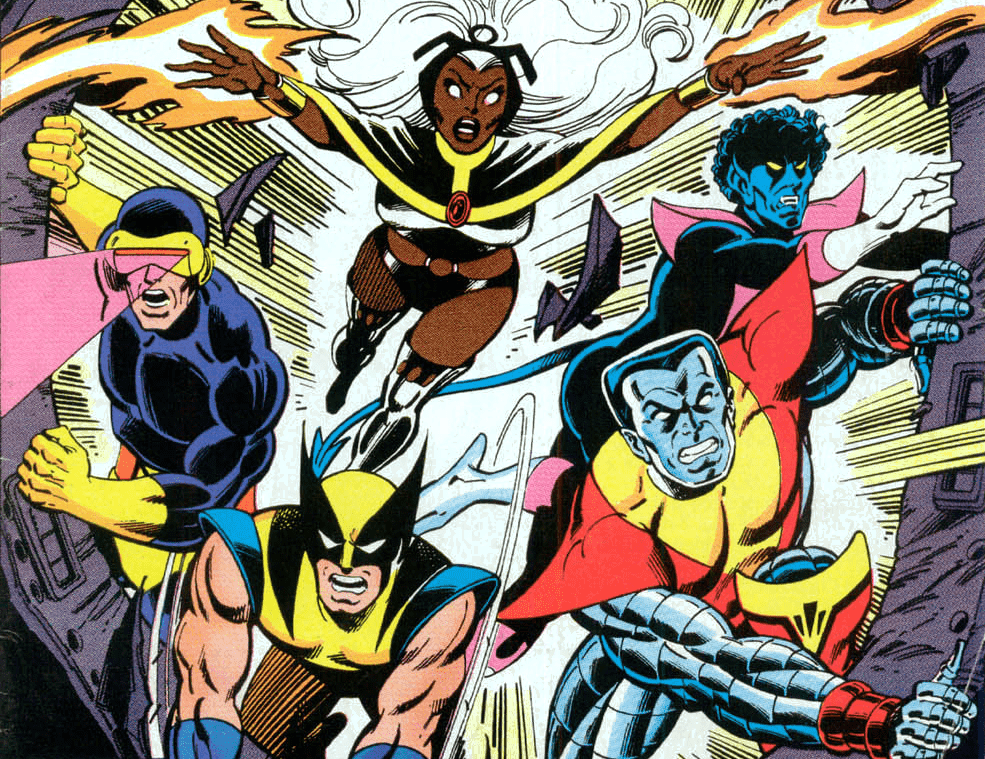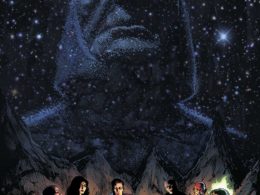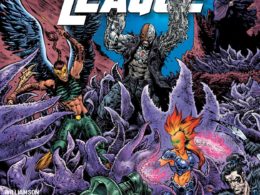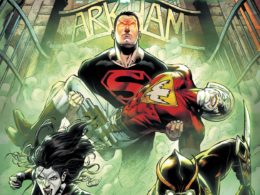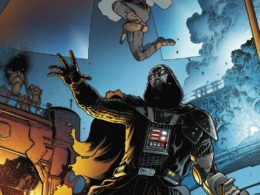When there’s a discussion about the best X-Men stories of all time taking place, it’s not valid unless there’s mention of Chris Claremont, the British-born, American comic book writer who wrote some of the most esteemed X-Men storylines ever. Claremont has to be credited for his remarkable longevity as well; he served as the writer for Uncanny X-Men from 1975 to 1991, the longest tenure in X-Men history.
In that time period, Claremont not only created such indispensable X-characters as Gambit, Rogue, Kitty Pryde, The New Mutants, Psylocke, Mystique, Sabretooth, Mister Sinister and many, many more — he also crafted stories every comic book fan knows about — “Days of Future Past,” “God Loves, Man Kills,” and “The Dark Phoenix Saga,” — regarded as some of, if not the most, defining and iconic X-Men literature of all time and storylines from which the blockbuster X-Men films draw their inspiration.
Claremont took to Reddit today for a Q & A session where he touched upon his inspiration for the “God Loves, Man Kills” storyline, which X-Men characters and storylines he’s want to go back and rewrite, the planning process behind his legendary run on Uncanny X-Men, his favorite story arc to work on, his favorite costume for Storm and more.
Q: Your story ‘God Loves Man Kills’ meant so much to me, and is a big reason as to why I was drawn to the X-Men. What was your inspiration for the story and was there any backlash?
Claremont: I think ‘God Loves, Man Kills’ reflects the existing reality of that era. The challenge that Weezy [Louise Simonson] and I set for each other, was if you could do one X-Men, one story, that would be the go-to pick for someone who’s never read the concept and be satisfied by the result. And also, to embrace a real world concern of mine at the same time, which unfortunately hasn’t gone away. If I could only write one X-Men story, this was it. It encompassed all of the character elements, all of the society elements, and I like to think it was also a really good story. The heartbreak for me is that it is as relevant now as it was then, but it also holds up for readers as well today.
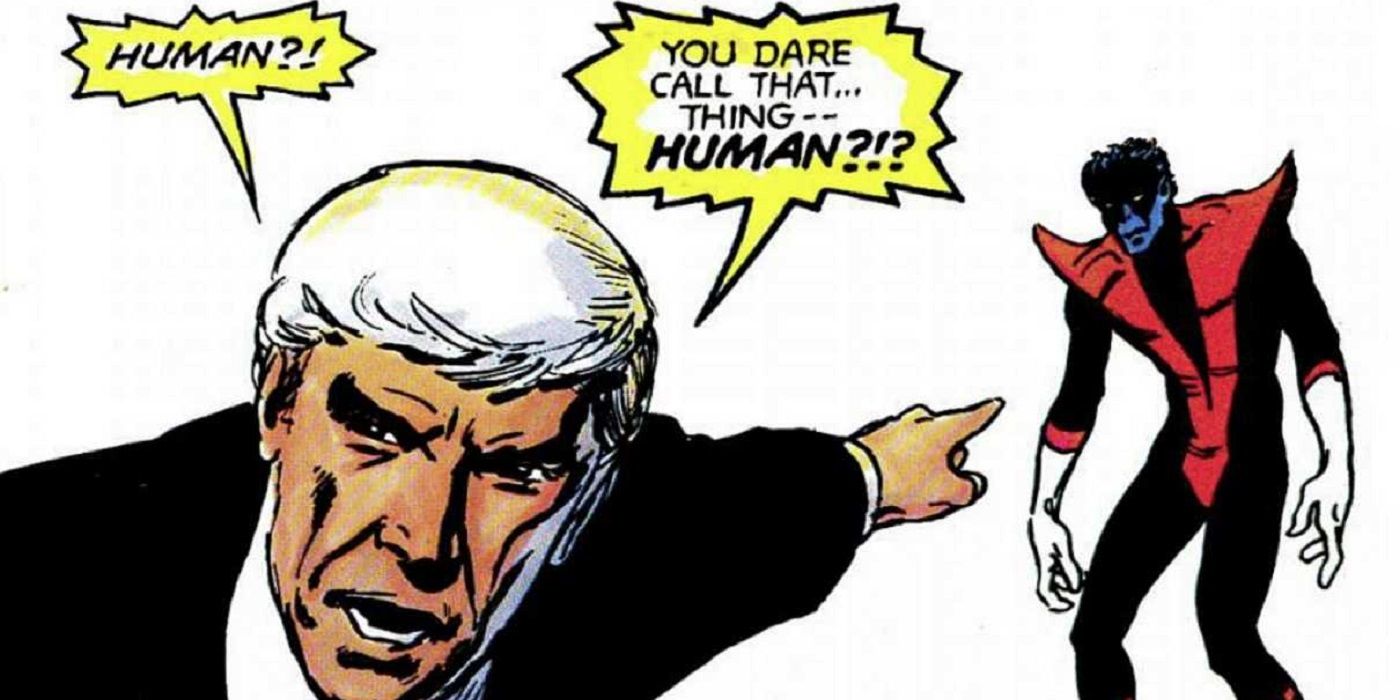

Q: If you could rewrite one X-Men character or story line, who/what it would be?
Claremont: Considering my vision of the X-Men was that it’s all one storyline from 94-279 page 11, I’d rather just rewrite the whole thing. If I could, I would revisit the Rachel arc I was starting at issue 209, so I could finish it as a miniseries or a maxiseries that starts off Excalibur. I’d like to revisit the story of Rachel, so I could get it better with her and the Phoenix. My B wish? I would rather have found a way to talk Jim Shooter into agreeing to my proposition when I heard about X-Factor, which was to leave Jean dead and hold onto the existing continuity. Bring Scott back with Madelyne and the baby for him to become the Professor X of X-Factor, and bring in Jean’s sister as the unattached member of the team, and thereby give Hank and Bobby and Warren something to do rather than rendering them functionally irrelevant.
Q: What works or events outside of comic books inspire you and your writing?
Claremont: Everything. Babies crying in the background, anything around me.
Take the baby. I did it in a 10-pager back in 2019 when the world was sane—I wrote a 10 page story about Scott and Madelyne and Franklin in Alaska. I mean, Reed’s a genius, you expect him to get it right, but how would Scott, how would Madelyne—Scott’s dealing with having kids, having grandparents for the first time. I sort of did, when I branched off into X-Men: The End, that to me is a fascinating paradigm. We’d never really gone into Super Heroes as ‘real people’. There’s always a point where the X-Men might decide, “I’m no longer running around in skintight costumes. I need to get a job, get married, etc.” To build links between the fictional characters with readers themselves, not just the younger readers—but the older readers, the grandparents. What can we do that makes them intrigued?
But these heroes’ lives? It’s reality. Not living in their own secure bubble, but living in a space and time that readers can recognize as their own, and building situations that we can relate to as people. For me, that’s the fun part. Dealing with real people, aspects of real life in the reader’s universe, because that makes the concept easier to connect to, and ultimately makes the reader bond with the series, and makes their determination to buy the issue even more intense.
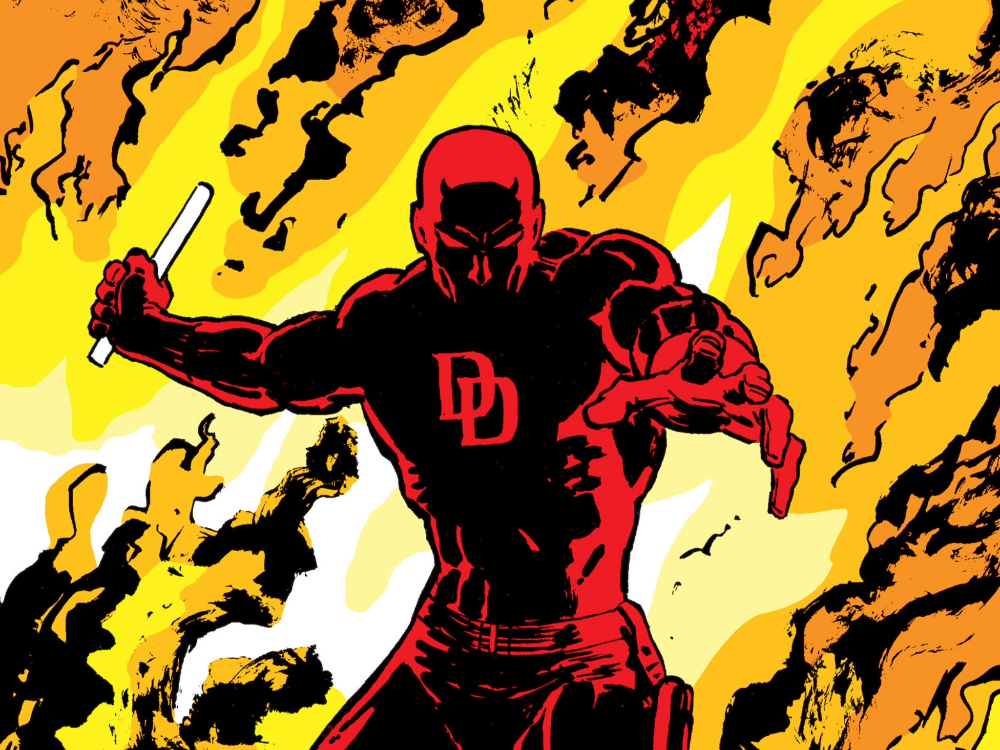

Q: What’s one of your favorite stories that somebody else has written with a character you had already written–an example of someone building on your work in a way you thought was interesting?
Claremont: To be quite honest, there aren’t that many. Frank Miller’s Daredevil — Daredevil was the first character I wrote at Marvel, and Frank’s take on him was superb, and it was sort of fun being in conflict with him in terms of who’s going to be #1 when he was doing the Elektra saga and I was doing god knows what! When it comes to X-Men, I try as little as possible to read other books, because it will either give me a jealousy headache or a fury headache. So for the most part I just let that slide.
Q: What is your favorite Storm costume?
Claremont: Favorite Ororo costume? I really liked Salvador Larroca’s in X-TREME X-MEN. But I think for me, the value as it relates to her, and to Kitty, and to Rogue, (because the guys’ costumes are just boring), there was a lot of opportunity to play. They weren’t costumes, they were clothes. A different mood, a different reality could provoke a different look. The fun of writing these characters is that they are people, they are not commercial icons. The Xavier Institute uniforms work for me because they are uniforms—on occasion dull and ugly. Once the X-Men become members of a various team, why can’t we play? Why can’t people change their mind? And why can’t we more often than not have characters make fools of themselves with what they wear? For me, I like playing around, rather than adhering to a brand identity. Which of course drives Editorial crazy.
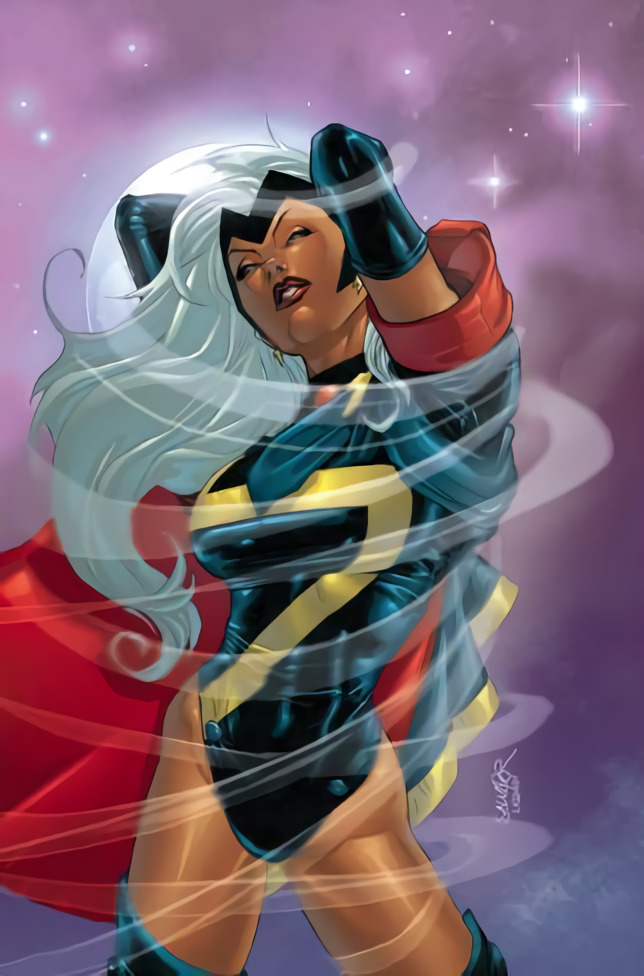

Q: How far out did you plan your Uncanny X-men run when you first began?
Claremont: It depends. You know, sometimes one structures things out quite a ways, but the problem with that is the unexpected. A storyline that might work with Artist A might not be as effective with Artist B. Or, a character might surface in the foreground or out of left field, and it might strike the artist’s fancy or my fancy, and then perhaps you want to go down that road. Or, as sometimes happens, you write an issue that turns out to be a total dud—in which case Archie Goodwin’s motto comes into effect: “It’s a POS, you’ve got 30 days to fix it.” Because that’s comics as a medium.
Yes, it’s serial, yes you’re going a certain direction, but you can make changes along the way. Going back to Stan Lee, and learning from the guy who built the universe. From Stan’s perspective, issues were single issues—they proceed, they come to an end. That doesn’t mean the characters don’t progress, but each issue itself is self-contained, because back then the distribution sucked, and as a reader you could never guarantee when you got the next issue. So you would need to find a way to play in that reality. But, as Stan would say, if it’s a great concept you can get two-issues, like “Days of Future Past.” But the last five pages have to be something to tease you back for the next issue.
The point is, is that I learned to write comics in a world where you had to balance and hook people with enthusiasm, but you also had to bear in mind that the newsstand might not get every issue in sequence. So, every issue has a new reader, and you have to establish who the characters are, what the reality is. That’s why in MARVEL TEAM-UP #100, which introduced Karma, the first five pages are seeing what her possession can do. She’s never seen Spider-Man before, but she’s discovering what he can do through brilliant visuals. But along the way, as she discovers what’s going on, so do the readers. You have readers saying “I’ve read Spider-Man for 50 years, I know all this shit!” But for new readers, they come in and want to read new stories, maybe they head over to TEAM-UP or AMAZING SPIDER-MAN, and they’ll start reading that book. The point is we take nothing for granted. Yes, established readers might find it a little boring, but we take it from the perspective that, if we sell 100 issues this month, we want to sell 110 next month. And maybe, when you have a big event issue with a cool new artist you can suddenly find yourself selling 7.9 million. That’s the idea.
Each issue is a step up an infinite ladder that will make it better for the creators, for the company, and in a little way for the characters. And to bring in as many readers as humanly possible. Because if they buy it, maybe they’ll tell their friends. But if I’m going to create a character that’s the next best thing since a comfy chair, I want the sales to justify that. I want it to come out and be Avengers: Endgame and sell 3 billion dollars at the box office. Is that greedy? Yes, but I have enough faith in my characters that the readers get an equal amount of satisfaction. And come back and tell their friends.
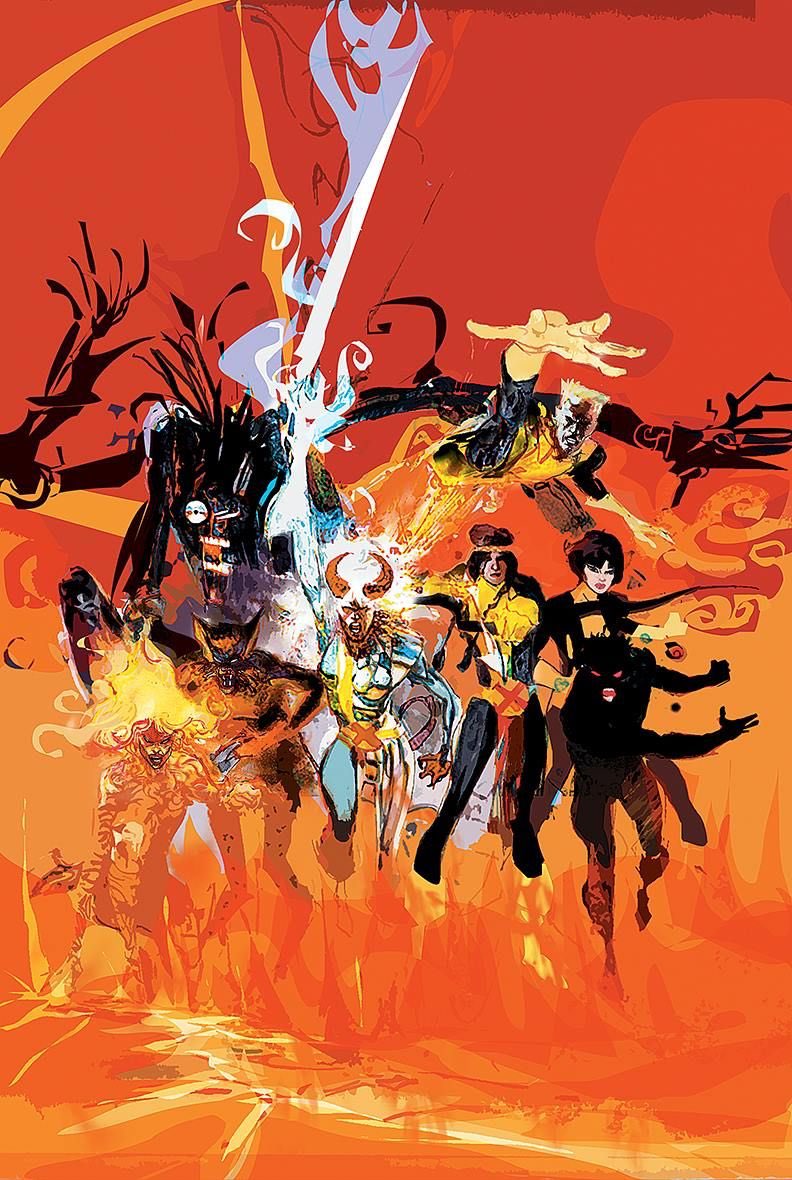

Q: When you worked with Bill Sienkiewicz on New Mutants,it was quite a different feel from your previous comics at least from a reader’s perspective. Even on the level of the amount of dialogue and the type of paneling. He was also maybe a bit ahead of his time in comics when you were working together. My question is how much and to what extent was Sienkiewicz’ influence on the book at the time? How much did he contribute to the writing aspect, the paneling layout and the dialogue?
Claremont: The paneling and the layout were all his. But that would apply as much to Bill on New Mutants as to Frank Miller on the Wolverine miniseries. When you’re dealing with that distinct and creative of a talent, you have to pay attention. New Mutants came out of the essence of Marvel storytelling: you put two guys in a room, and let them butt heads.
I would give Bill a story (“here’s how we start, here are the people, here’s the middle, here’s how we end.”). And what came out of Bill was “Holy cow!”, and it’s as much of a revelation now as it was then. Which was exactly what happened when we came back together again 18 months ago to do the New Mutants special. I viewed it basically as the next issue in the series, it just took us 33 years to get that girl’s perspective, since his career has taken him in so many different directions since then. We had no idea how he would approach storytelling character presentation. You know, he’s going back to, what I’m going back to where I was half a lifetime ago.
And what surprised us both was—It was like putting on a great pair of shoes. If they fit, they were fun. There were no problems. All we all we really came out of that wishing was what my son confronted C.B. at a Chicago Comic Con: Could we have another 60 pages please? Because this could go for another hundred pages, and still have a story to tell. C.B. didn’t look thrilled.
It’s like with Bill and I, no time had passed. We just wanted to keep going and explore these kids as people. And at the same time, grab the readers’ eyes and power drive their visual imagination so that they couldn’t resist turning the page to see what happened next. Because that’s what Bill offers. When he puts pen to paper, a vision of the world and of the characters emerges. That is unlike any other creator I have ever seen. The thing with his tenure on New Mutants is he did not draw so much from much as subtext. You weren’t getting his visual presentation of the characters (especially a character like Warlock) like what it might be if you were looking at a Jack Kirby presentation of it or even an Alan Davis presentation of it. Alan did the most wonderful New Mutants visuals possible. But we could not compare one to the other. It was so far beyond apples and oranges. It’s like apples and boulders. They weren’t even connected in any way other than the fact that they were both the same characters. But it was from a wonderfully different and elevated, gut wrenching perspective.
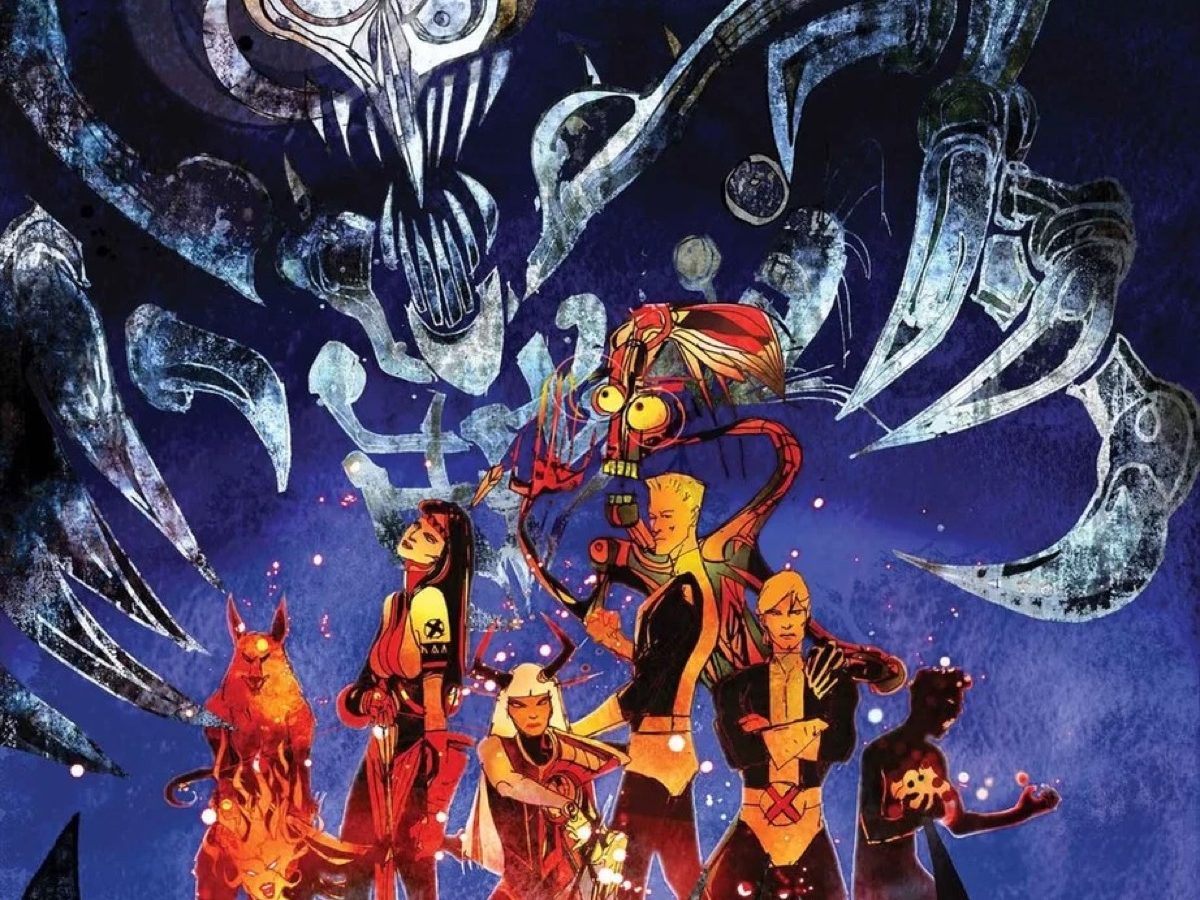

You could not look at them in Bill’s books and not fall in love with them. Because you were seeing what they looked like, who they were inside. And yeah, there was some normal scenes are some great moments where, where Sam and Illyana find themselves in bathing suits dumped into Minneapolis in the middle of a blizzard and think, ‘this isn’t fun’, but each time I see its images, I want to see more than I saw the last time. And I know that the next time I will see more still, and will want to write more about that moment, those characters, that situation. Then I got a chance to. For a writer, that is the proverbial gold mine. Not simply text. Subtext. And that’s just brilliant.
Sorry, no short answers here!
Q: Are there any characters who you’ve never written for yet have a fondness for? Specifically X-Men?
Claremont: Hm…Off the top of my head, I can’t think of any major Marvel characters that I haven’t written! I mean in a practical sense, writing a character doing a guest appearance is easy. But getting into their head, into their heart, defining their life is very hard.
There are a lot I would like to have written on a regular basis, but I was boxed into the mutant box for so long it wasn’t practical. A “What If?” I would loved—you know, Mystique, Rogue, Sabretooth, and Deathbird were all created as Ms. Marvel/Avengers/etc. characters. It would have been fun to play with them in that milieu.
What was amusing to me was that John Byrne had gone to Jim Shooter and made the classic “you go or I go” challenge, and Jim basically came down to the idea that I would stay and John would do the FF.
But what was intriguing to me was that everything I had created on the X-Men beside Kitty was created after he left—so what if Jim had agreed to John’s pitch, and what if everything I had created for the X-Men would have been created for the FF or the Avengers? So that’s the alternate reality. That would be an interesting “What If?” miniseries or maxiseries.
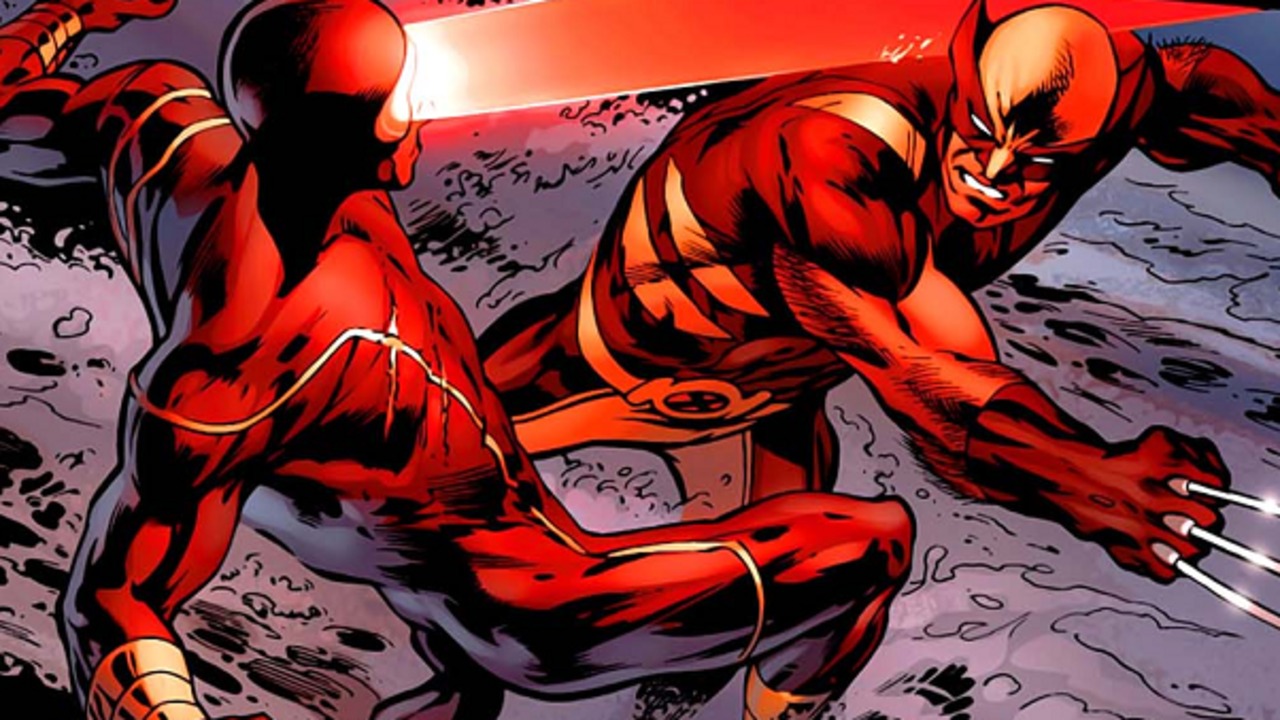

Q: Why does everyone think Wolverine is the bee’s knees when Cyclops is the best X-Man?
Claremont: Logan is cool, Scott is not. My problem is I thought Scott was a wonderful character until he moment he walked out on Madelyne, and went back to Jean—and that was dishonorable and destroyed him as a character. Logan wouldn’t do that. He’d kill you but he’d do it for the right reasons.
Scott was the base, the foundation of the team. He’s the core around which everything orbits, which is why with Madelyne, it meant so much to me to give him a happy ending to resolve the whole Jean conundrum. To get that death out of his system, and get on with real life. And for me, for Scott, it was all about real life.
I was just reading the issue with the fight between Scott and Ororo. And the whole point is, Scott thinks, “I have to stay with the X-Men, they need me to lead them.” But he’s got [a] wife and a kid now. Maybe it’s time to grow up. There aren’t that many families in the super hero universe, like the FF. Scott is not Reed Richards. Give yourself a break. Give your family a break.
And for Scott, it’s coming up to a point where he has to rewrite the patterning of his life, which occasionally is what happens when you grow hit your 20s. And it’s very, very hard. Falling in love, making the commitment of “I do,” is awesome. Finding yourself with a baby is the scariest, most wonderful thing that can possibly happen. And again, as a writer, I was selfishly looking forward to dealing with that over the years with Scott, as I tried to do in X-Men. What’s it like for him to be a father? How does he relate to things? How does he deal with being married? There was all sorts of stuff there on both a real world and a super hero perspective. And then it all got thrown away. And that’s why it took Louise Simonson two years, if not longer to figure out how to resolve it. To get to get them all as people back on track, so that we could resolve it.
But, you know, for me it was just a moment that you could not go back from—because it took away the opportunity for Scott to be a father, and it just remade him as tropes. And they deserve better than that. And yes, It’s been 30 years and I still bear a grudge. Sorry about that.
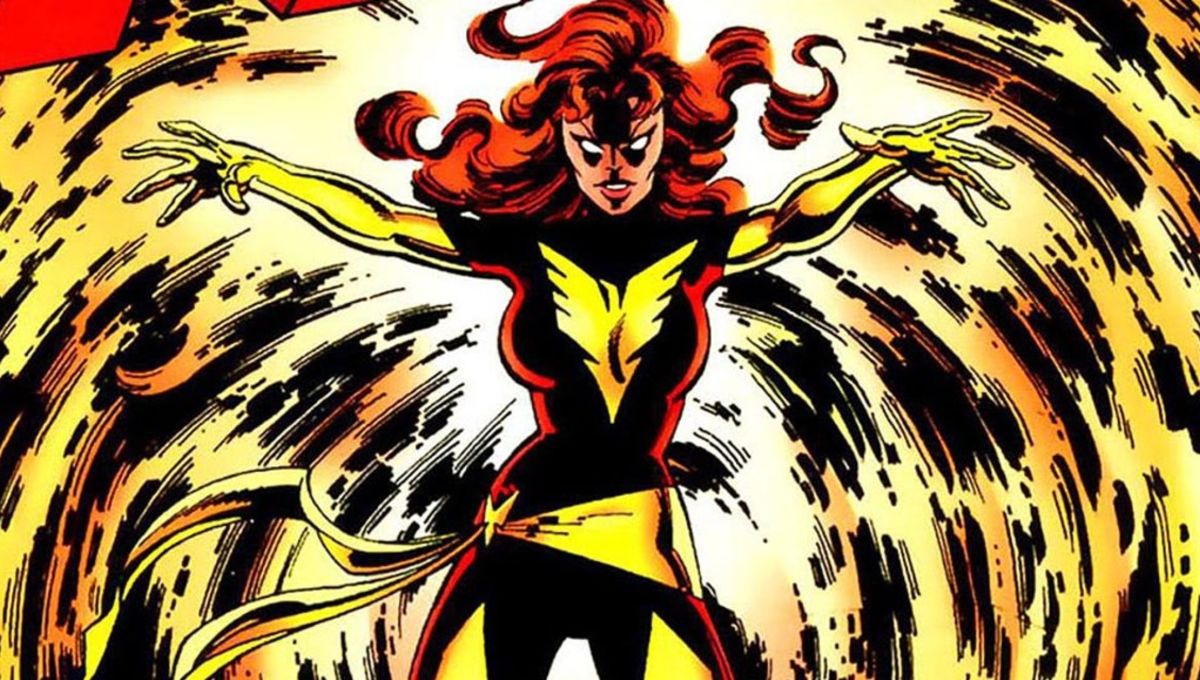

Q: What was your favorite character arc you got to develop? Which character got developed after you that surprised you but were very happy with? You got to work with some amazing artists, is there any character’s design that was your favorite? Are there any stories or characters that you feel you never got a chance to write?
Claremont: Hmm… Well, I guess, as I said before, X-MEN #94-279 and page 11, plus the New Mutants and Excalibur and Wolverine stories we stuffed in along the way.
Favorite character? I’ll start with an apology — none.
Uhh… Dave Cockrum. His design for Phoenix, and Dark Phoenix, and Ultimate Phoenix are brilliant. Ms. Marvel was brilliant. Binary was totally kickass. And I suppose that is partly my frustration, because as a creator or writer Binary was Carol Danvers getting everything she wanted in life, plus an identity that was unique to her, not derived from a preexisting character.
Who else? Salvador Larroca, absolutely splendid. His design for Ororo in X-TREME X-MEN was wonderful. The thing is, for me, even though I call them costumes, I try not to think of them as costumes—they’re clothes. Which is why I developed over the years the rationale that the core X-Men outfit is as much a training outfit as military fatigues. A little more color-obsessed, but the most important thing is that it’s not a “costume.” They take advantage of the school’s technology, some of it terrestrial, extraterrestrial—it’s a battle outfit. You can walk around in the middle of Antarctica or take a short visit to deep space and it will protect you. It’s an all-purpose clothing gimmick that allows you to survive any situation that the writer is vicious enough to think of. It’s not just a suit of clothes. Otherwise Peter Parker would have dropped dead of pneumonia decades ago! But if you have the technology to plant a Blackbird in your backyard, or a starship in a Baxter Building, you can come up with a decent set of clothes. Not just the practicality of wearing clothes, but being effective battle armor.
Special thanks to the moderators of the Reddit Comic Books subreddit for setting up and holding this Chris Claremont X-Men question and answer session.





